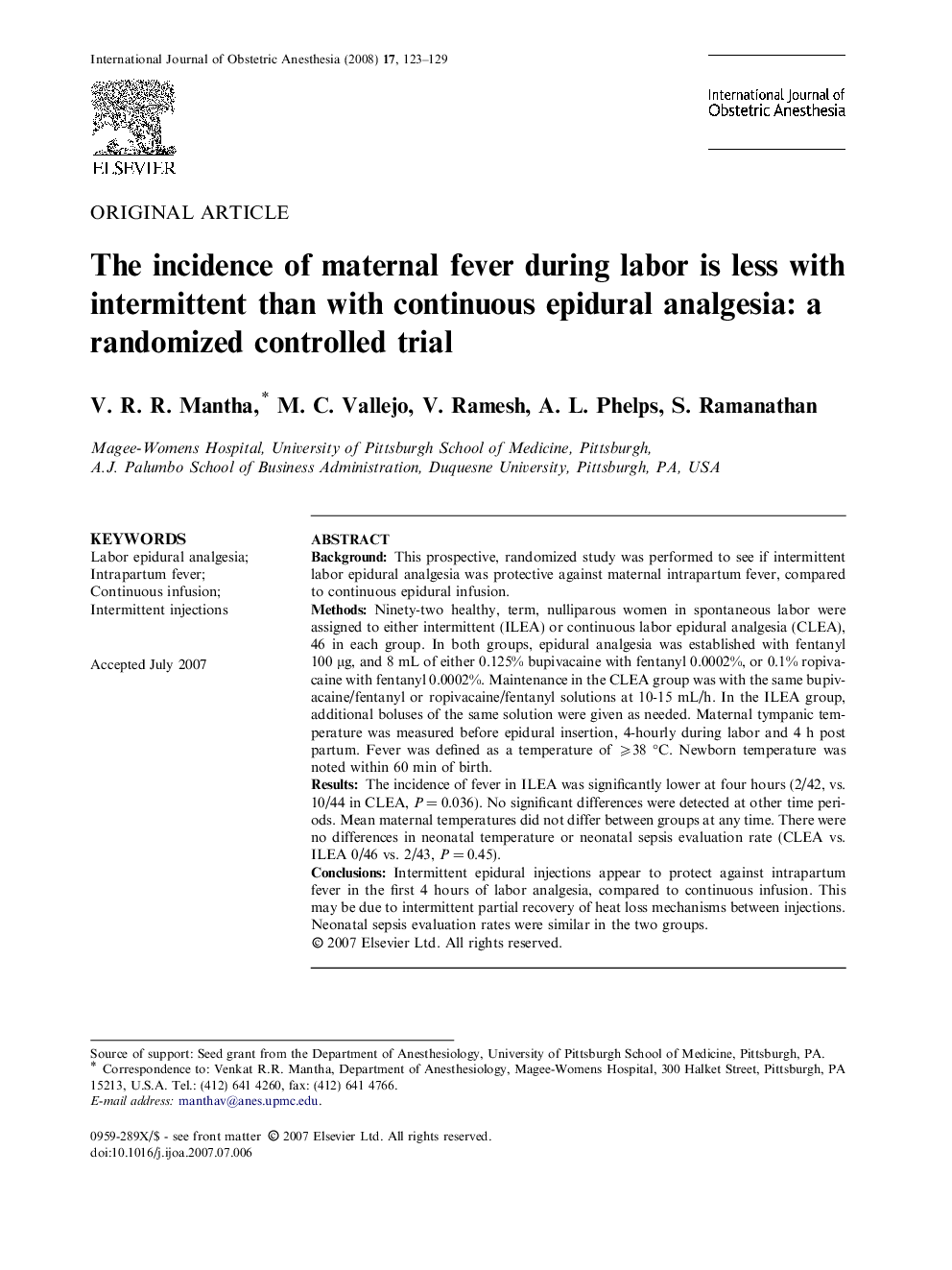| Article ID | Journal | Published Year | Pages | File Type |
|---|---|---|---|---|
| 2758123 | International Journal of Obstetric Anesthesia | 2008 | 7 Pages |
BackgroundThis prospective, randomized study was performed to see if intermittent labor epidural analgesia was protective against maternal intrapartum fever, compared to continuous epidural infusion.MethodsNinety-two healthy, term, nulliparous women in spontaneous labor were assigned to either intermittent (ILEA) or continuous labor epidural analgesia (CLEA), 46 in each group. In both groups, epidural analgesia was established with fentanyl 100 μg, and 8 mL of either 0.125% bupivacaine with fentanyl 0.0002%, or 0.1% ropivacaine with fentanyl 0.0002%. Maintenance in the CLEA group was with the same bupivacaine/fentanyl or ropivacaine/fentanyl solutions at 10-15 mL/h. In the ILEA group, additional boluses of the same solution were given as needed. Maternal tympanic temperature was measured before epidural insertion, 4-hourly during labor and 4 h post partum. Fever was defined as a temperature of ⩾38 °C. Newborn temperature was noted within 60 min of birth.ResultsThe incidence of fever in ILEA was significantly lower at four hours (2/42, vs. 10/44 in CLEA, P = 0.036). No significant differences were detected at other time periods. Mean maternal temperatures did not differ between groups at any time. There were no differences in neonatal temperature or neonatal sepsis evaluation rate (CLEA vs. ILEA 0/46 vs. 2/43, P = 0.45).ConclusionsIntermittent epidural injections appear to protect against intrapartum fever in the first 4 hours of labor analgesia, compared to continuous infusion. This may be due to intermittent partial recovery of heat loss mechanisms between injections. Neonatal sepsis evaluation rates were similar in the two groups.
